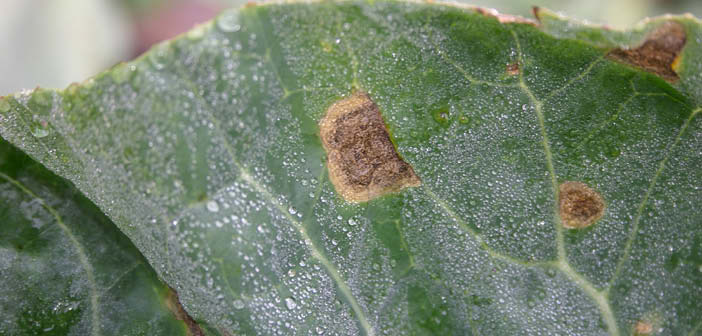Syngenta Technical Manager, Simon Jackson has warned that the onset of heavy morning dews will seriously increase the risk of ringspot and White blister in brassica crops over the coming weeks. He adds that crops have recovered remarkably well from the dry, slow growing conditions at planting, to now have good leaf canopies going into the autumn.
“The very dry conditions early in the season had significantly checked the initial incidence of ringspot, which often pops up through June and July and acts as a source of inoculum,” he explained. “However, with canopies now closing over and prolonged periods of leaf wetness from dew and heavy showers, pressure is building, and disease is taking off.
“Ringspot lesions left uncontrolled will quickly produce multiple infection points on surrounding plants, and White blister only requires shorter periods of leaf wetness, compared to ringspot, so pressure has already been high, with repeated red warnings on the Brassica Alert disease forecasts” he added.
He also points out that broccoli has been in particular demand for frozen processing. However, the key challenge for growers has been the incidence of systemic downy mildew, being especially evident as visible black staining when florets are broken up for freezing.
However, many growers also comment that downy mildew appears to be a precursor of other later disease issues – primarily spear rot. “Targeting systemic downy mildew early can have a real season long benefit on overall broccoli head quality,” he added.
“White blister is often slow to take off in the early autumn,” Simon pointed out. “But with more brassicas planted and levels of inoculum now in the environment, it will soon reach critical mass for widespread outbreaks. Putting strategies in place will be essential to protect leaf area and crop yields.”














